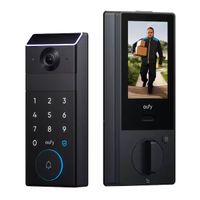I just upgraded to a smart lock with built-in video doorbell camera — and it’s a game changer for my home
Now I can unlock my front door with a code or even a wave of my hand
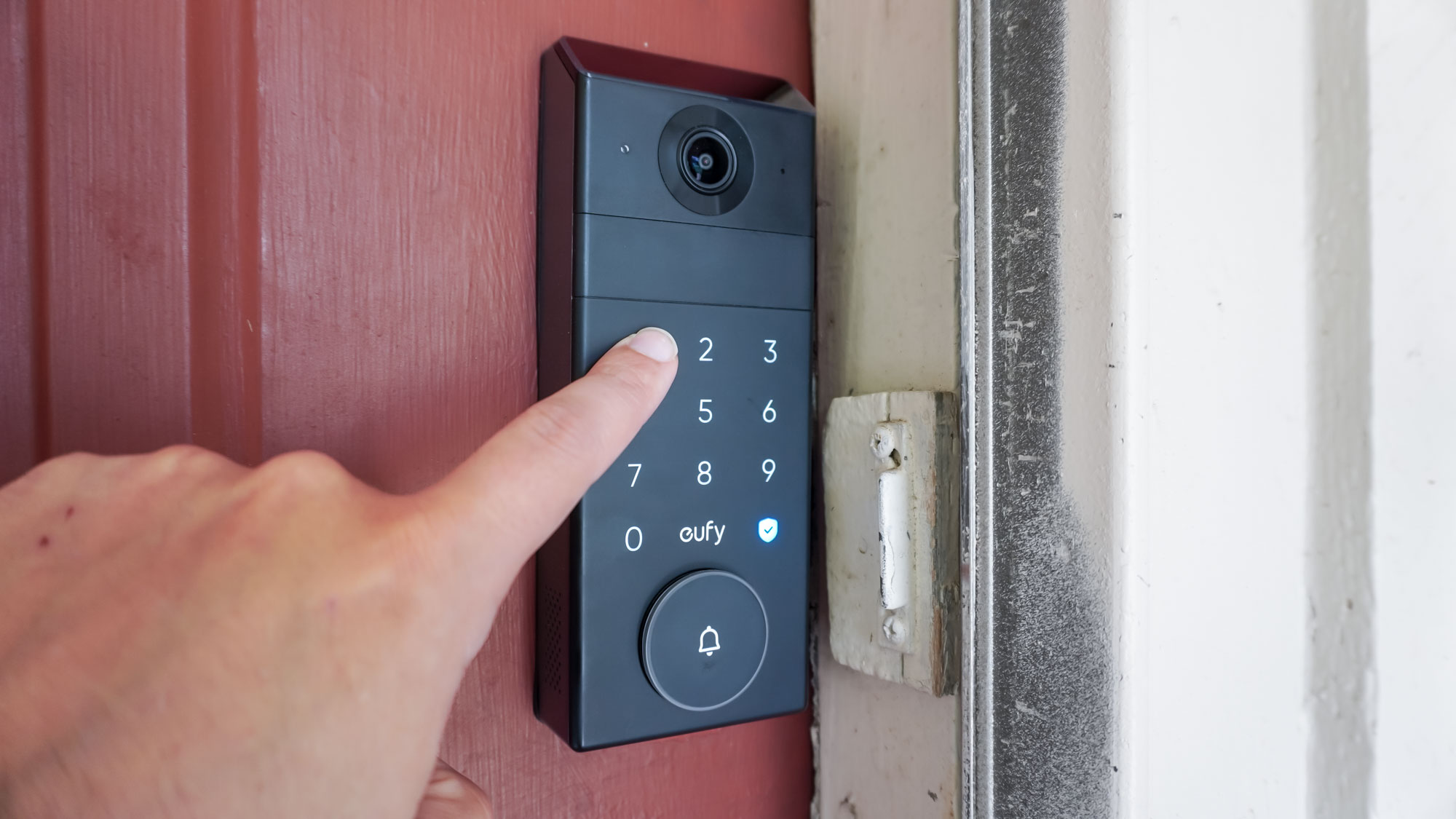
Leaving the house without having to carry my keys is something I’ve always wanted to be able to do, especially since I went keyless up until a few years ago.
No, there wasn’t someone waiting for me at home ready to open the door. Instead, back when I lived in Korea, I had a keyless lock on my apartment door and this was all the way back in 2011. Even now, I miss having a keyless lock almost as much as I miss Korea.
When we moved into our house, I thought we’d be using the front door a whole lot more. However, as my garage is an add-on, my family and I typically tend to go through there instead, as our driveway is on the other side of our house.
One of the first things I did when I moved back to the U.S. was to start building out my smart home. In the years since, I’ve tried out many of the best smart home devices from smart lights and smart speakers to home security cameras which give me a bird’s eye view of what’s going on inside and outside of my house.
While I added one of the best video doorbells next to my front door to keep an eye on incoming packages, I was wary about messing with the locks themselves. However, when Eufy reached out about testing out its new smart lock, I remembered just how convenient going keyless was and decided it was finally time to ditch my keys for good.
Here’s how it went installing and using the new Eufy FamiLock S3 Max and why I definitely shouldn’t have waited so long to go keyless again.
More than just a smart lock
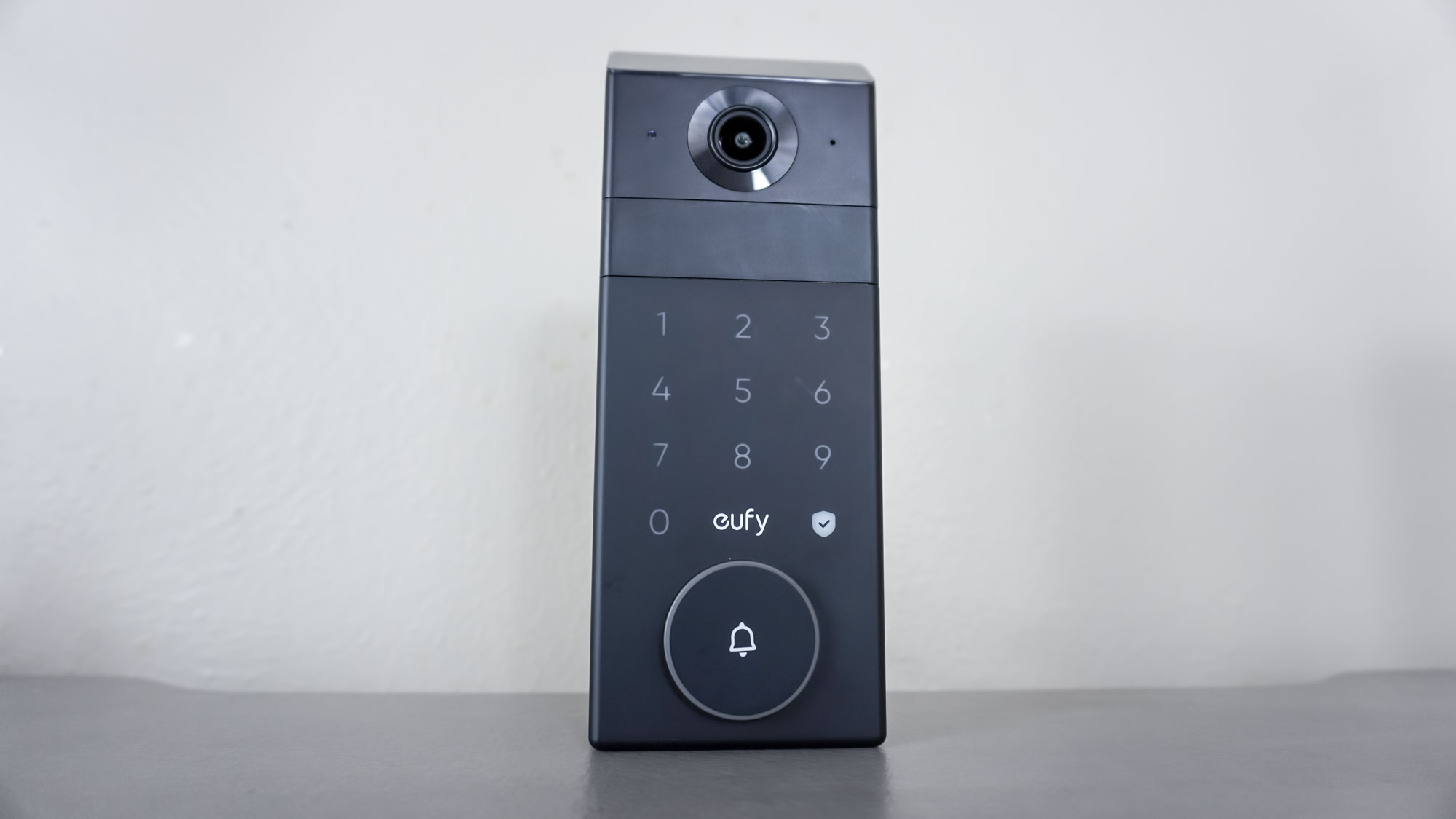
Calling the Eufy FamiLock S3 Max a smart lock doesn’t really do it justice. Instead, it's three devices in one: a home security camera, a video doorbell and of course, a smart lock. There’s a camera with a 2K resolution and a 180-degree field of view at the top, a keypad in the middle and a doorbell button on the bottom.
Even with so much tech crammed inside it, the FamiLock S3 Max isn’t that much larger than, say, a Ring doorbell. It also helps that its video doorbell functionality doesn’t require a subscription as it has 8GB of storage built in. In my case, though, I already have a Eufy HomeBase 3 with a 1TB hard drive installed. This is from back when I reviewed the Eufy Edge Security System.
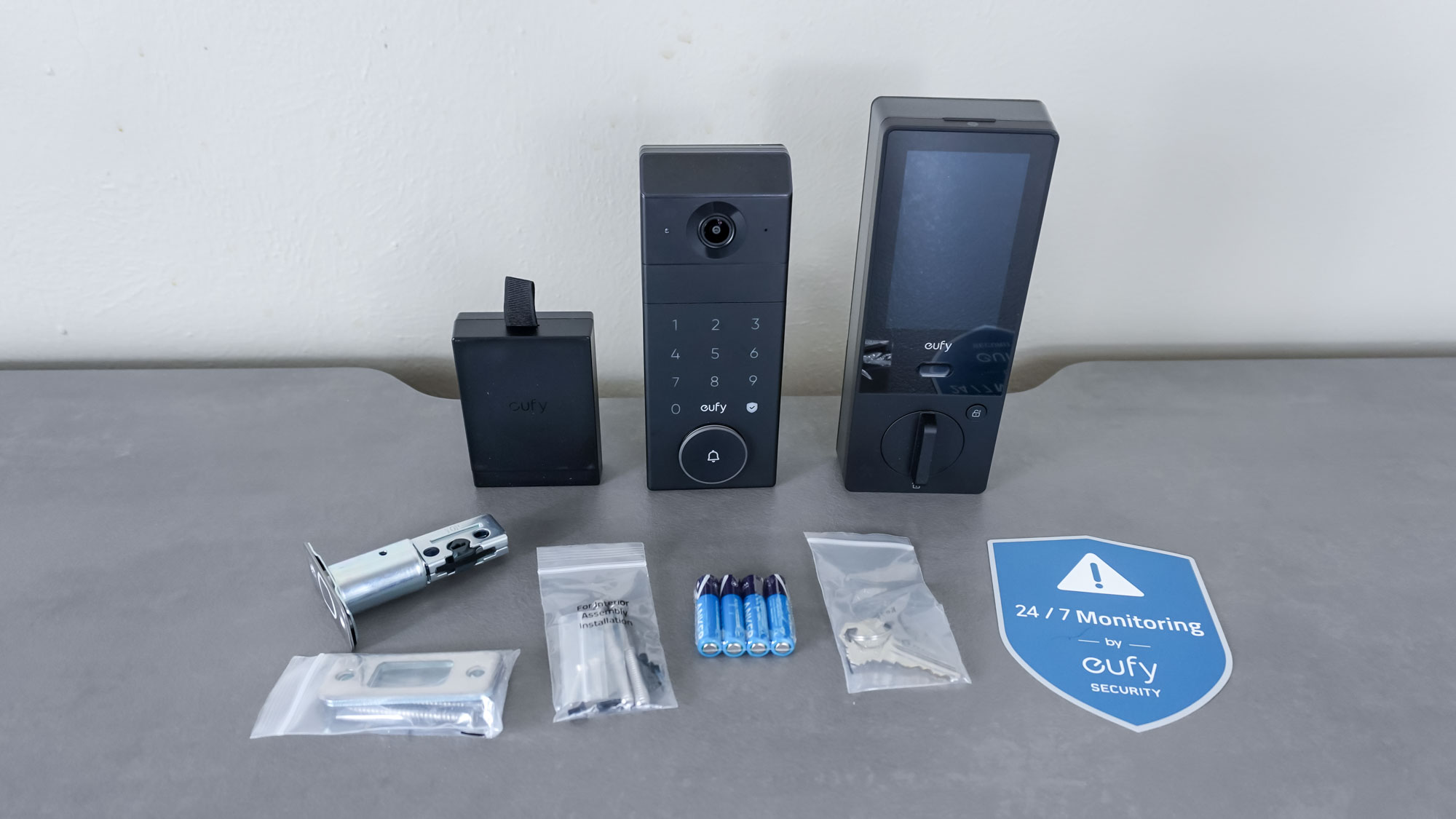
As this was my first time installing a smart lock, I was a bit worried. However, Eufy includes everything you need to swap out your existing deadbolt with the FamiLock S3 Max.
You get a mounting plate, a latch bolt assembly, screws and mounting hardware, extra batteries and a physical key which can manually override the smart lock if its battery dies.
There are technically two versions of this smart lock: the FamiLock S3 and the FamiLock S3 Max. Eufy sent over the fully specced out version for me to check out, and I’m glad they did as the S3 Max has a neat trick up its sleeve — but more on that later.
Installation was fairly simple for the most part. The main difficulty I ran into was removing my old deadbolt. Fortunately, Google Gemini was there to help and after sharing a few pics with Google’s AI chatbot, I was finally able to take the deadbolt off my front door.
One word of warning, though: since this is a battery-powered smart lock and not a hardwired one, you have to charge up the FamiLock S3 Max’s main battery before getting started.
As with the batteries on the EufyCam 3 security cameras I reviewed, this one took quite a while to fully charge for the first time. However, I left it charging overnight after taking my initial unboxing pics, so it wasn’t really a problem. If you’re wondering about the four included AAA batteries, they serve as a battery backup for when the FamiLock S3 max’s battery is depleted.
Eufy FamiLock S3 Max: $399 @ Home Depot
This smart lock doubles as a video doorbell and even has a built-in display to replace your door's peephole. You can enter a code on the front to unlock it or even place your hand on top to do so using its palm vein recognition tech. The FamiLock S3 Max also comes with 8GB of storage built-in and there are no monthly subscription fees to worry about.
Enter a code or just wave your hand
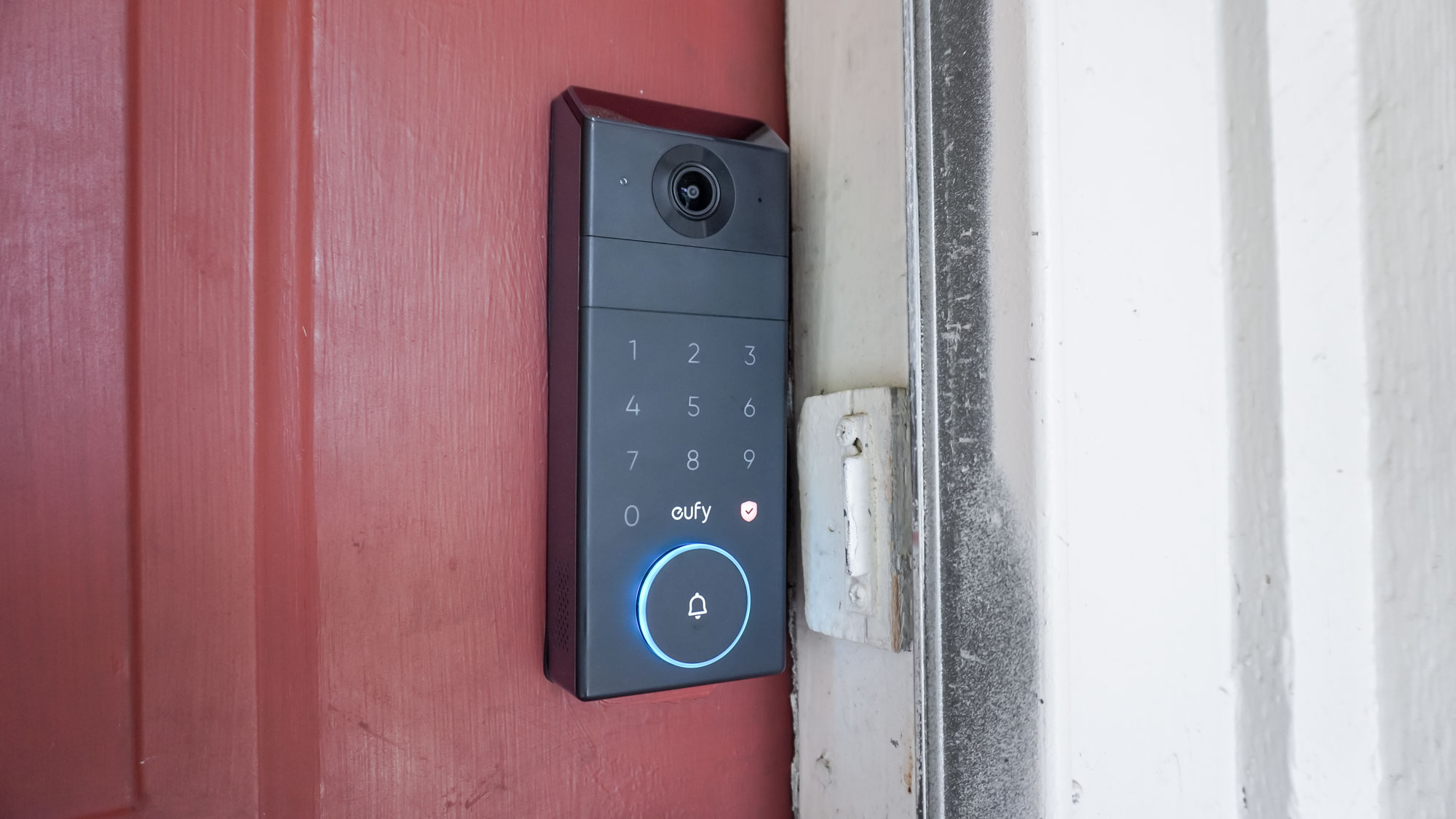
In memory of my Korean keyless lock, I used part of its code with the FamiLock S3 Max. One thing that I prefer about this much more high-tech lock, though, is the fact that I can just start putting my code in without having to press any other buttons first. Then, when I’m done, I just tap on the checkmark button and it instantly unlocks.
One thing that might put people off from swapping out their deadbolt for a smart lock like this is the fact that someone with a pair of binoculars or even a Samsung Galaxy S25 Ultra could zoom in from across the street and memorize their code. Eufy thought of this, too, and came up with a clever trick to get around it.
When you input your door code, you can keep pressing random numbers after it and the FamiLock S3 Max will still unlock. This way, even if you are being snooped on, it will be a lot harder for someone to memorize your code.
Tapping on the buttons to enter my code immediately brought me back to doing so on my keyless Korean lock. However, the FamiLock S3 Max can also be unlocked using biometrics. While a lot of smart locks feature a fingerprint scanner for more secure entry, this one takes things up a notch thanks to its built-in palm vein recognition, which works with either of your hands.
Palm vein recognition is also five times more secure than a fingerprint since no two palm vein patterns are the same, even with identical twins.
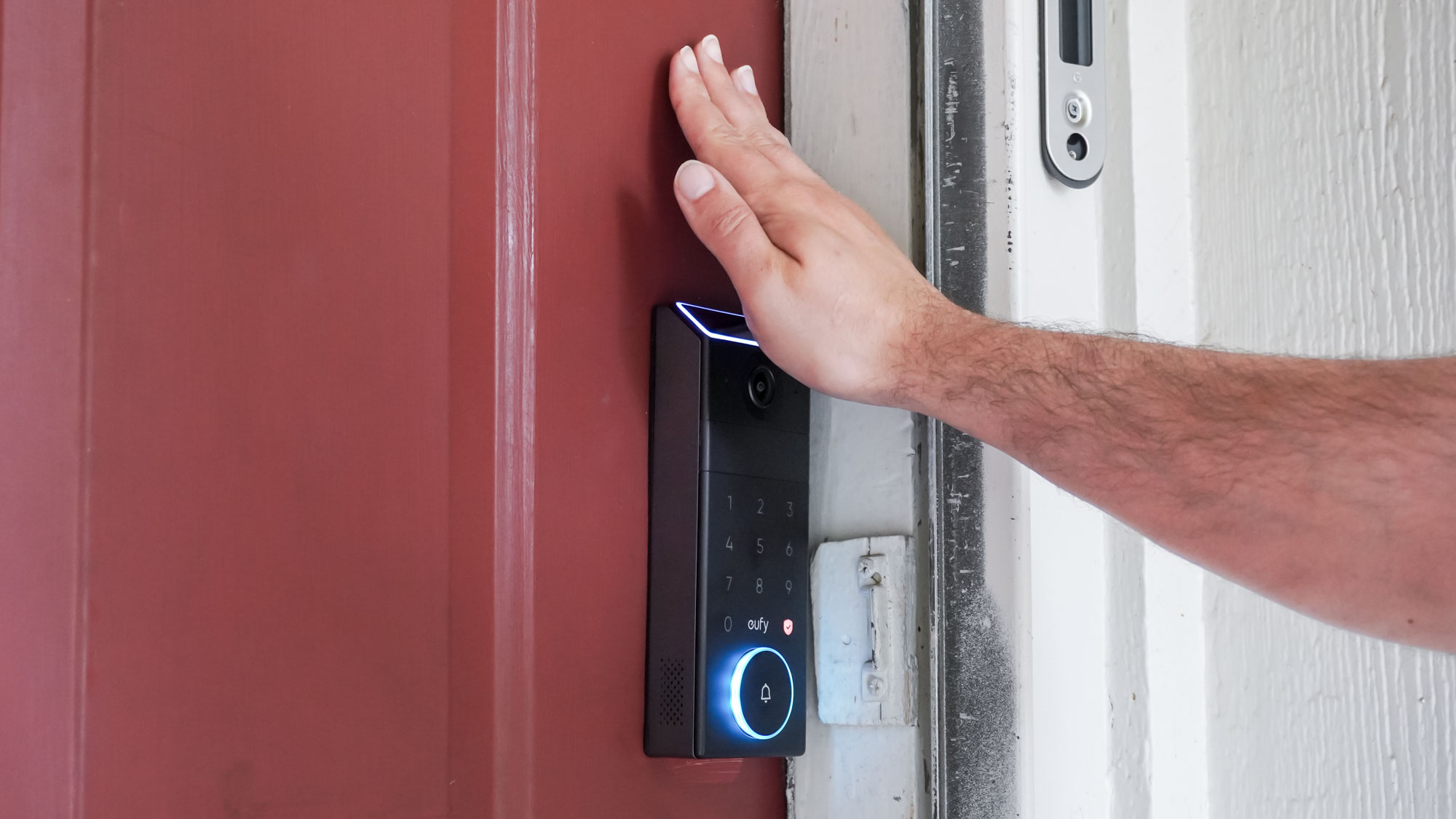
To use this feature, you just place your palm over the top of the FamiLock S3 Max. The palm vein reader lights up when active, and a second or so later, the deadbolt unlocks and you can now go right through your front door. If you’re worried about Eufy having your palm vein data, don’t be, as all of this sensitive biometric data is stored locally on the device itself.
While you could have your friends and family scan their own palm veins — which might be a fun way to show off your new smart lock — you can also give them access codes instead. The FamiLock S3 Max can provide up to 100 different access codes which is useful if you have a dog walker routinely come by your house or even for contractors coming in to do a home renovation project.
Doubles as a digital peephole
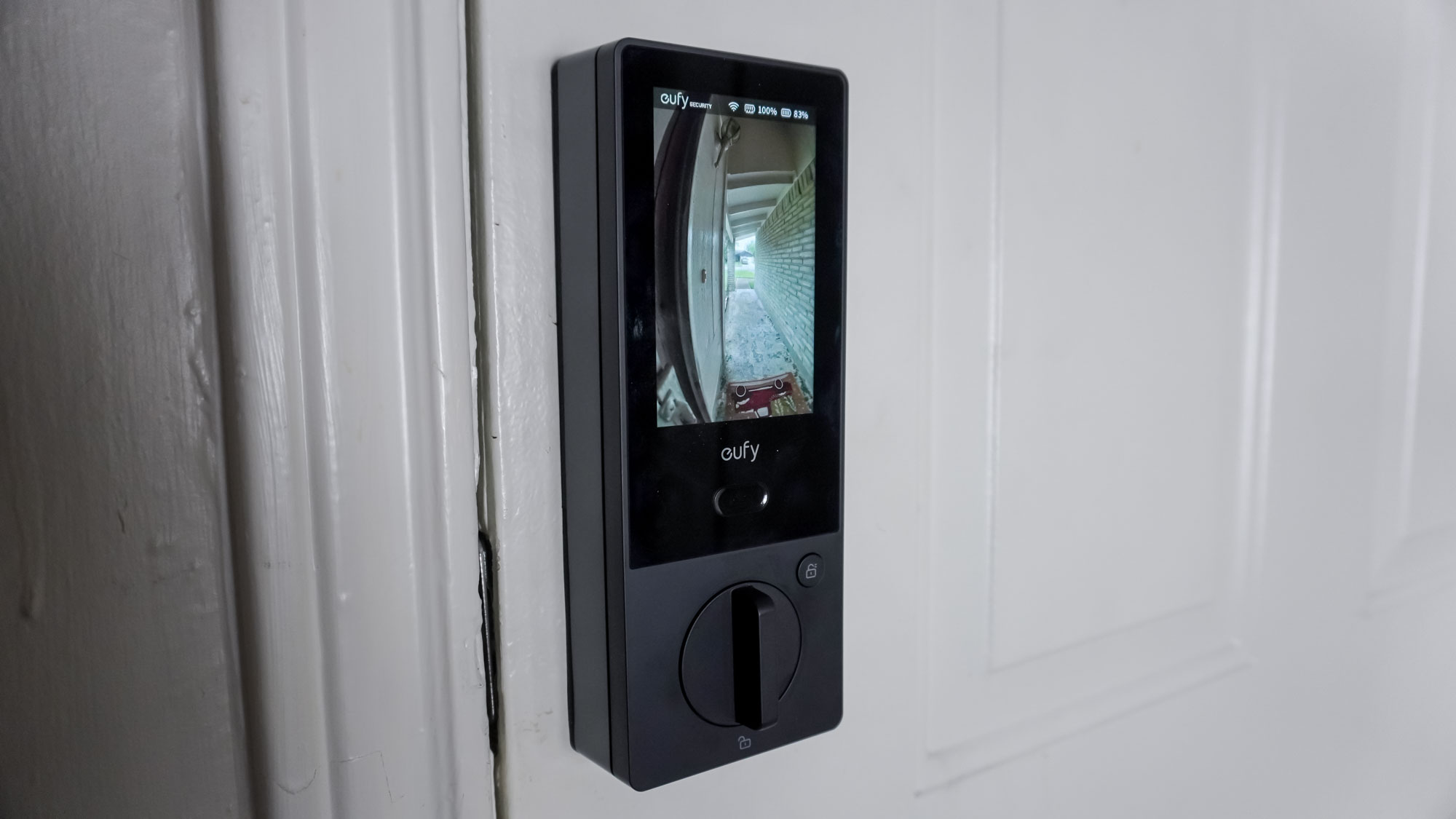
I alluded to it before, but the main difference between the FamiLock S3 and the FamiLock S3 Max is that the latter has a 4-inch, full HD internal video screen. There’s a button underneath the Eufy logo and pressing it brings up a live feed from your smart lock. It shuts off after a few seconds though, so you don’t have to worry about draining the device’s main battery.
While this will certainly be useful on doors without a peep hole, I found that it came in just as handy on my front door which has one.
Back when I first moved in, I could barely see out of the peep hole as it was covered in paint. However, even after I used some rubbing alcohol to clean it, I still found that the peep hole wasn’t ideal for seeing who was at the door. Sure, I could take out my phone, open an app and see who was there through my outdoor security cameras, but using the FamiLock S3 Max’s built-in display is even easier. Likewise, we often hang a wreath on the front door, and if it's not positioned just right, it can block my view of the peephole anyway.
Another thing I like about having a display on the back of this smart lock is that even kids can quickly tell you who’s at the door without having to get up on a step ladder or using your phone.
At the end of the day, this extra display isn’t a necessary feature but if you’re thinking about adding the FamiLock S3 on your own front door, I’d recommend paying extra for the S3 Max. Besides being convenient, you also get a much wider field of view than you would with a peephole and thanks to Eufy’s night vision, you don’t have to turn on the porch light to see if that pizza you ordered on Friday night has finally been delivered.
The smart upgrade I didn’t know I needed
Since going all in on having a smart home, I’ve definitely tried out some smart gadgets that were a bit on the excessive side. After using the FamiLock S3 Max for the past month, though, it’s one of the better smart devices I’ve tried.
From being able to get into my house without a key and giving others the ability to do so too to quickly peeking out to see what’s going on outside my front door, I don’t regret ditching my old deadlock in the slightest. I also haven’t had to charge the FamiLock S3 Max yet and even as I write this, both its internal battery and the AAA backup batteries still have a full charge.
So how does it compare to my keyless Korean lock? Well, it’s a lot easier to use, has loads more features and it doesn’t play any annoying songs or speak to me in Korean when I get its code wrong. Plus, I can fine tune just about everything about it right from the Eufy app.
In fact, after trying out the FamiLock S3 Max, part of me is tempted to pick up a few more for my side door and for the garage door, both of which don’t have peepholes. At $399, the FamiLock S3 Max is on the expensive side but the extra $50 compared to the standard FamiLock S3 is definitely worth it for the indoor display. This smart lock is certainly an investment but since it has built-in storage, there aren’t any subscription fees to worry about which definitely add up over time.
If you’re tired of carrying keys with you or you just want a more secure way to give others quick and easy access to your home, the FamiLock S3 Max is certainly worth considering.
Would you ditch your deadbolt for a smart lock if you had the chance? Let me know in the comments below and be sure to check out our full review of the Eufy FamiLock S3 Max for even more info.
More from Tom's Guide
Sign up to get the BEST of Tom's Guide direct to your inbox.
Get instant access to breaking news, the hottest reviews, great deals and helpful tips.

Anthony Spadafora is the managing editor for security and home office furniture at Tom’s Guide where he covers everything from data breaches to password managers and the best way to cover your whole home or business with Wi-Fi. He also reviews standing desks, office chairs and other home office accessories with a penchant for building desk setups. Before joining the team, Anthony wrote for ITProPortal while living in Korea and later for TechRadar Pro after moving back to the US. Based in Houston, Texas, when he’s not writing Anthony can be found tinkering with PCs and game consoles, managing cables and upgrading his smart home.
You must confirm your public display name before commenting
Please logout and then login again, you will then be prompted to enter your display name.
